Tarzan's New York Adventure

Brief Synopsis
Cast & Crew
Richard Thorpe
Johnny Weissmuller
Maureen O'sullivan
John[ny] Sheffield
Virginia Grey
Charles Bickford
Film Details
Technical Specs

Synopsis
On an escarpment in Africa, Tarzan, his wife Jane and son Boy watch as a plane lands in the distance. Tarzan, who fears the intrusion of "civilized" men, then uses vines to swing through the trees to the plane, where he finds pilot Jimmie Shields and his passengers, hunter Buck Rand and animal trainer Manchester Mountford. Learning that Buck has come from America to capture lions for zoos, Tarzan angrily tells them to leave the next day. Back at his tree-top home, Tarzan tells Jane everything, saying that only the pilot seems to understand him. Tarzan and Jane are worried because Boy is fascinated with the plane, and early the next morning, Boy secretly goes to see it with family chimpanzee Cheetah and his pet baby elephants. Buck and Manchester are impressed with Boy's ability to have the animals perform tricks and Jimmie soon realizes that Buck wants to take Boy back to America with them. When Buck invites Boy into the plane, Jimmie angrily tells Boy to leave. A few minutes later, though, after Boy bravely saves Manchester from an attacking lion, Buck shoots the lion as it is about to kill Boy. Just then, hostile natives attack. Hearing the battle from a distance, Tarzan and Jane swing toward the plane, but a native shoots an arrow through their vine and they fall to the ground. When the natives then set fires around the unconscious pair, Buck and Manchester, thinking that Tarzan and Jane are dead, quickly grab Boy and they all escape in the plane. Unknown to them, Cheetah saves Tarzan and Jane by bringing them a rope and reviving them before they are burned. Cheetah then communicates with Tarzan to let him know that Boy has been taken in the plane. Jane realizes that they must go to civilization to find Boy, and in a nearby town, she and Tarzan learn that the plane's destination was New York and trade in gold nuggets for money and clothes suitable for civilization. Although Tarzan is uncomfortable, he agrees to accompany Jane and Cheetah to New York. Once there, they learn that Jimmie is living at a posh hotel. After they check into the hotel themselves, Jane learns from a bellboy that Jimmie frequently goes to the club Moonbeam to hear his girl friend, Connie Beach, sing. That night, Connie tells them that Jimmie could not prevent Boy from being taken to a circus run by Buck and his unscrupulous partner, Colonel Ralph Sargent. Meanwhile, at the circus, Manchester has befriended Boy, who tells his troubles to his new elephant friends. Because their own circus is not doing well, Sargeant and Buck are eager to sell Boy's services for $100,000 to a South American circus. When Tarzan, Jane and Cheetah show up at the circus looking for Boy, Buck tries to sneak him away, but Tarzan lets out a jungle yell and Boy recognizes it. He is whisked away by Buck as Tarzan and Sargent scuffle. When the police arrive with Jimmie and Connie, Jimmie reveals that Sargent has posted an immigration bond for Boy and Jane tells Tarzan that they must now trust the law. At a guardianship hearing, Tarzan and Jane's lawyer argues their case, but when Sargent's lawyer forces Jane to admit that Boy's real parents died in a jungle plane crash, Tarzan lunges at him. During a recess, Jane encourages Tarzan to use his own law to get Boy back and he flees across the city's skyscrapers. He then hails a taxi to drive him to the circus, but when the police stop the taxi on the Brooklyn Bridge, Tarzan climbs to the top and dives into the water. At the circus, Manchester helps Boy escape from Buck and Sargent and the child runs to the high wires. Tarzan soon arrives and swings to Boy's rescue, but Sargent's men capture him and place him in a cage. With the aid of the elephants, Tarzan breaks free and finally stops Buck and Sargent from escaping with Boy. Back in the courtroom, Tarzan is sentenced to thirty days in jail, but the sympathetic judge suspends his sentence and promises to go fishing in Africa soon. Tarzan now realizes that law is good and the family happily returns to their jungle home.

Director

Richard Thorpe
Cast

Johnny Weissmuller

Maureen O'sullivan

John[ny] Sheffield

Virginia Grey

Charles Bickford

Paul Kelly
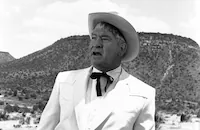
Chill Wills
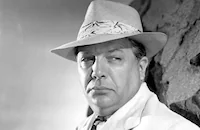
Cy Kendall
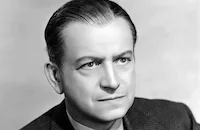
Russell Hicks
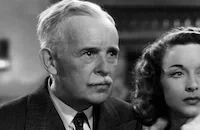
Howard Hickman
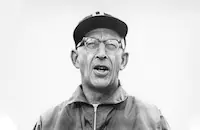
Charles Lane

Miles Mander
Cheetah, The Chimp
Darby Jones
Jasper Weldon
Milton Kibbee
Inez Cooper

Anne Jeffreys
Florence Wright
William Forrest
William Tannen
Dudley Dickerson
Dick Wessel
Frank Marlowe
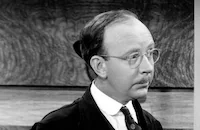
Hobart Cavanaugh
George Offerman Jr.

Natalie Thompson
Paul Kruger
George Magrill
Harry Tenbrook
Wade Boteler
Ken Christy
Ted Oliver
Victor Zimmerman
Pat Mcvey

Dorothy Morris
Marjorie Deane

Eddie Kane
Bill Cartledge

Mantan Moreland
John Dilson
Eddy Chandler
Philip Morris
Willie Fung
Eddie Lee
James B. Leong
Crew
Howard Campbell
Myles Connolly
Myles Connolly
George Emerson
Cedric Gibbons
Arnold Gillespie
Gordon Kahn
Gus Kahn
William R. Lipman
Fud Livingston
Matt Malveck
Warren Newcombe
Gene Ruggiero
Douglas Shearer
Shoup
Art Smith
David Snell
Frederick Stephani
Vera Van
Sidney Wagner
Edwin B. Willis
Dolph Zimmer

Videos
Movie Clip


Trailer
Film Details
Technical Specs

Articles
Tarzan's New York Adventure
For her sixth Tarzan film at MGM, O'Sullivan couldn't escape from any of the chomp-happy simians playing Cheeta, Tarzan's chimpanzee sidekick. (Also, Tarzan and Jane's love life, at the insistence of the easily rattled Hays Office, had simmered down with the adoption of Boy (Johnny Sheffield) in Tarzan Finds a Son! (1939).) But O'Sullivan was probably thrilled that most of Tarzan's New York Adventure (1942) would take place outside the jungle.
The shortest Tarzan movie at 71 minutes (everything's faster in New York?) tells how Tarzan is visited by shady circus owner Buck Rand (Charles Bickford) who kidnaps the acrobatic Boy to perform in a circus back in the States. Tarzan, Jane and Cheeta venture to what Jane calls "my jungle" to rescue their son, an adventure that leaves Tarzan less than enchanted with a civilization that requires him to wear a suit and venture into nightclubs that, to him, "smells like Swahili swamp. Why people stay?" (The irony was that for an "Ape Man" known for his loincloth, Weissmuller was quite comfortable in a suit. After being drubbed by New York reporters for wearing a turtleneck sweater to a press conference for Tarzan the Ape Man (1932), he always dressed smartly in public, right down to a custom-sewn golf wardrobe crafted by Beverly Hills tailors.)
6'3" former Olympic swimmer (and 6 time medalist) Weissmuller was a virile 28 years old when first cast as Tarzan. Here, a decade later, he's still fit but looks tired. The early 1940s were busy years for Weissmuller. In addition to this film and Tarzan's Secret Treasure (1941) being filmed back to back, Weissmuller was a new parent (to son Johnny Jr. and daughter Wendy) and spent much time touring with names like Bing Crosby and Bette Davis in support of the war effort, as well as running special swimming seminars for GIs, including classes about the proper technique for swimming under water alight with flaming petroleum!
Still, Weissmuller was in good enough shape to do many of his own stunts (including Tarzan's city rooftop escape and the climactic clamber up the Brooklyn Bridge) but he often generously turned stunt work over to his longtime Tarzan double Paul Stader so his pal could earn a "bump" (a bonus for completed stunts, equal to half his daily rate). While the real Brooklyn Bridge makes an appearance in this final scene, credit must also be given to the magnificent trompe l'oeil matte paintings mocking up the New York skyline. They were created by MGM special effects painter Warren Newcombe, whose work is most famously seen in The Wizard of Oz (1939).
Given how much of the movie is taken up with animal hijinks, credit must also go to animal trainer George Emerson. A former Barnum and Bailey animal handler (and primarily an elephant trainer), Emerson joined MGM in 1932 to deal with an uncooperative rhinoceros on the set of Tarzan the Ape Man. Elephant wrangling is no joke - Emerson was named as a witness in an industrial accident trial in 1936 when an animal handler under his employ was trampled to death by an elephant; Emerson would also double for Weissmuller in scenes involving contact with animals. (African-American comic Mantan Moreland avoided contact with Cheeta in their one notorious scene together, where Cheeta jibbers over the phone and Mantan scolds "You ain't getting' fresh with me, is you, colored boy?" The scene was subsequently removed from many prints struck for television.)
MGM's option on the Edgar Rice Burroughs story lapsed in 1942, and executives were leery about slow returns on Tarzan movies in foreign markets with the outbreak of WW II. Tarzan's New York Adventure was the last MGM Tarzan film before the series was handed over to the more budget-minded RKO. Weissmuller and Sheffield stayed on to do Tarzan Triumphs (1943) and Tarzan's Desert Mystery (1943) but O'Sullivan called it quits, deciding instead to devote her time to parenting a large brood that included daughter Maria "Mia" Farrow. When one of the chimpanzees purported to be Cheeta died in 2011, Mia tweeted "My mom, Tarzan's Jane, referred to Cheeta-the-chimp as 'that bastard' - saying he bit her at every opportunity."
Producer: Frederick Stephani
Director: Richard Thorpe
Screenplay: Myles Connolly (story and screenplay); Edgar Rice Burroughs (characters); Gordon Kahn (uncredited); William R. Lipman
Cinematography: Sidney Wagner
Art Direction: Cedric Gibbons
Music: David Snell
Film Editing: Gene Ruggiero
Cast: Johnny Weissmuller (Tarzan), Maureen O'Sullivan (Jane Parker), Johnny Sheffield (Boy), Virginia Grey (Connie Beach), Charles Bickford (Buck Rand), Paul Kelly (Jimmie Shields, Pilot), Chill Wills (Manchester Montford), Cy Kendall (Col. Ralph Sergeant), Russell Hicks (Judge Abbotson), Howard Hickman (Blake Norton, Tarzan's Lawyer).
BW-71m.
by Violet LeVoit
References:
Weissmuller, Johnny and W. Craig Reed. Tarzan, My Father. ECW Press, 2008
Parish, James Robert. Great Child Stars. Ace Books, 1976
Nochimson, Martha. Screen Couple Chemistry: The Power of 2. University of Texas Press, 2002.
Abbott, Sam. "Animals, Too, Are Movie Stars". Billboard, Apr 7, 1951
Rosen, R.D. "Lie of the Jungle: The Truth About Cheeta the Chimpanzee". Washington Post, December 7, 2008

Tarzan's New York Adventure
Quotes
Trivia
This was the first film shown free to servicemen overseas. A 16 mm copy was sent to Iceland and shown 10 May 1942.
the first movie Tarzan, makes a cameo appearance as a circus roustabout.
In this movie, Tarzan jumps 250 feet from the Brooklyn Bridge. 'Johnny Weismuller' actually did the jump.
Notes
The working title of the film was Tarzan Against the World. A written prologue reads: "Beyond the last outpost of civilization, a mighty escarpment towers toward the skies of Africa-Uncharted on maps-A strange world-A place of mystery." Although the Copyright Catalog lists Loew's Inc. as the film's copyright claimant and there is a copyright statement on the film, the number and date listed, LP2061 on December 17, 1941, are incorrect in the Copyright Catalog, and the actual number and date have not been determined. The CBCS credits Matthew Boulton in the role of the "Portmaster," but that role was actually played by Miles Mander, who is credited onscreen. According to a Hollywood Reporter news item, when the film began production, it marked the first time that M-G-M put two Tarzan films into production in the same year. Another Hollywood Reporter news item noted that Tarzan's New York Adventure was the first of 1,200 films to be shown for free to U.S. armed forces, and a 16mm print was flown to Iceland for its initial showing on 10 May 1942.
This film was the sixth and final film in M-G-M's "Tarzan" series and was the studio's last Tarzan film until their 1958 release, Tarzan's Fight for Life, directed by H. Bruce Humberstone and starring Gordon Scott and Eve Brent. Subsequent to the release of Tarzan's New York Adventure, series stars Johnny Weissmuller and John Sheffield continued their roles for a time with producer Sol Lesser, who released twelve Tarzan films through RKO, beginning with the 1943 film, Tarzan Triumphs. Although Hollywood Reporter news items indicate that Maureen O'Sullivan was initially to continue in the series as "Jane," pregnancy prevented her from appearing in Tarzan Triumphs and she never returned to the role. Frances Gifford initially took over the role, which went to Brenda Joyce in 1945. For additional information on the M-G-M and RKO Tarzan films and others featuring the Edgar Rice Burroughs character, please consult the Series Index, see the entry above for Tarzan Triumphs and see the entry for Tarzan, the Ape Man in AFI Catalog of Feature Films, 1931-40.















